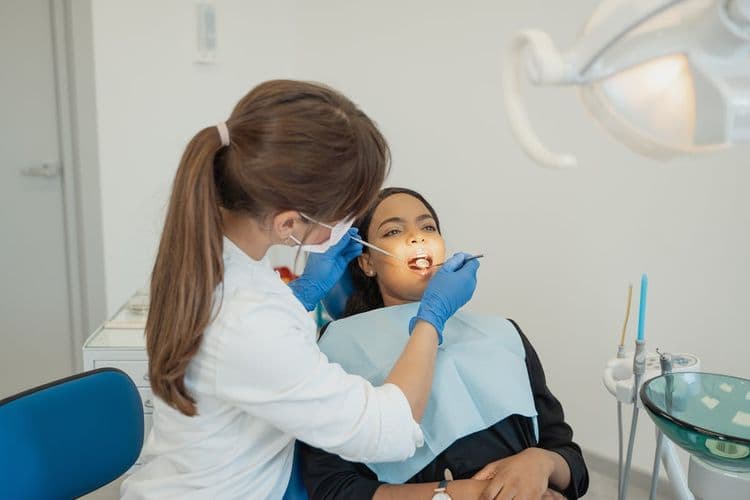Preventative dental care is a multi-faceted approach to maintaining oral health, with implications that stretch beyond a radiant smile. It involves not only daily rituals of brushing and flossing but also regular dental visits and a balanced diet. As we explore the depth and breadth of preventative care, we will uncover the profound impact it can have on individual health outcomes, its role in circumventing more invasive and costly dental procedures, and the benefits it affords society as a whole. This intricate interplay is worth considering, sparking an intriguing dialogue on preventative dental care.
Understanding Preventative Dental Care
While it may seem complex, understanding preventative dental care is essential for maintaining ideal oral health. It involves practices designed to prevent oral diseases before they develop. An essential component of this is oral hygiene, which encompasses daily tasks such as tooth brushing and flossing. However, it’s important to debunk dental myths that can compromise these efforts. For instance, the belief that brushing harder results in cleaner teeth can actually lead to enamel erosion and gum damage. Similarly, the myth that sugar is the only cause of cavities overlooks other contributing factors like plaque and acid. By understanding the nuances of preventative dental care, one can effectively protect their oral health.
Importance of Regular Dental Check-ups
Regular dental check-ups hold a significant place in preventative dental care, primarily because they are instrumental in detecting oral health issues at an early stage. The advantages of routine check-ups are manifold, ranging from maintaining ideal oral health to preventing complex dental issues. In the following discussion, we will explore these aspects in detail, emphasizing the rationale behind the need for regular dental visits.
Detecting Oral Health Issues
Because oral health is a vital component of overall well-being, it is essential to recognize the importance of regular dental check-ups in detecting oral health issues. Early detection of abnormalities or diseases is a key advantage of these visits as it allows for prompt treatment, preventing more serious complications down the line. Dentists use state-of-the-art diagnostic tools to detect issues that may not be visible or cause discomfort until they have advanced considerably. These tools can identify caries, gum disease, and even oral cancer at an early stage. As a result, regular dental check-ups serve as an invaluable tool in maintaining oral health, emphasizing the important role they play in preventative dental care.
Advantages of Routine Check-ups
Despite the commonly held belief that dental check-ups are solely for addressing existing issues, they actually play a pivotal role in preventing future dental problems. Routine check-ups are designed to detect early signs of tooth decay, gum disease, and other oral health issues. Early detection leads to prompt treatment, which can ultimately result in significant cost savings by avoiding complex, expensive procedures down the line. Additionally, preventative dental care contributes to the long term benefits of maintaining a healthy mouth, thus enhancing overall well-being. It also helps preserve natural teeth, ensuring proper function and a confident smile. Consequently, the importance of regular dental check-ups extends beyond immediate treatment, offering substantial health and economic advantages.
Brushing and Flossing Techniques
Mastering the art of brushing and flossing is a vital step towards maintaining ideal oral health. Optimal brushing techniques involve holding the toothbrush at a 45-degree angle to your gums, applying gentle pressure, and using short back-and-forth strokes. It is essential to brush all surfaces of your teeth - the outer, inner, and chewing surfaces. As for flossing methods, gently glide the floss up-and-down between your teeth, following the curve of each tooth to avoid damaging the gum line. Remember to use a fresh section for each tooth. These techniques, when performed consistently and correctly, can appreciably reduce the risk of gum disease and tooth decay, essential elements in preventative dental care.
Diet’s Impact on Oral Health
The significance of diet in maintaining oral health is often underestimated, yet it plays an essential role. The interaction between the foods we consume and our dental health is a vital area to comprehend, as certain foods can cause harm to our teeth. Conversely, a diet rich in specific nutrients can considerably improve oral health, acting as a powerful preventative measure against dental issues.
Understanding Food-Teeth Interaction
While many people may not consider their diet as a key factor in maintaining oral health, it’s essential to understand the interaction between food and teeth. The food composition, including acidity levels, sugar alternatives, and texture effects, can greatly influence our oral health. For instance, foods with high acidity levels can erode tooth enamel, while those with hard or sticky textures can damage teeth or lead to cavities. In addition, dietary habits like the frequency of snacking, food timing, and the hydration impact also play important roles. Regular snacking can increase the risk of tooth decay, while staying hydrated helps in saliva production, which aids in neutralizing acids and washing away food particles. Hence, a thorough understanding of food-teeth interaction is crucial for preventative dental care.
Harmful Foods for Teeth
Building upon our understanding of how food interacts with our teeth, it is important to identify specific food items that may adversely affect oral health. Sugary snacks and acidic beverages are among the top culprits. Sugary snacks, such as candy and pastries, can lead to tooth decay by feeding harmful bacteria in the mouth. This process produces acid that erodes tooth enamel, the protective outer layer of the teeth. Likewise, acidic beverages, including sodas and citrus juices, can also cause enamel erosion. Regular consumption of these items without proper oral hygiene can lead to cavities and other dental issues. Consequently, moderating intake and practicing diligent oral care are essential to mitigate these potential harms.
Nutrient-Rich Foods for Oral Health
Shifting from the potentially harmful foods to the beneficial ones, let’s explore the domain of nutrient-rich foods that contribute to oral health. The key oral nutrients are calcium, phosphorus, and Vitamin D, essential for tooth and gum health. Nutrient sources for these are dairy products, fish, and sunlight respectively. Vitamin C, present in citrus fruits and peppers, strengthens the gum tissue. Fluoride, found in fluoridated water and seafood, is paramount for tooth enamel strength. Furthermore, foods like apples and carrots, often termed ‘detergent foods’, stimulate saliva production and help in cleaning teeth. Hence, a balanced diet, rich in these nutrients, can greatly influence oral health. Remember, your diet is not only feeding you but also the bacteria living in your mouth.

The Role of Fluoride in Dental Care
Undeniably, fluoride plays a pivotal role in preventative dental care. This naturally occurring mineral is integral in the fight against tooth decay, providing a shield for your teeth against the harmful acids produced by plaque bacteria and sugars in the mouth. The fluoride benefits are numerous, including the remineralization of weakened tooth enamel, reversing early signs of tooth decay, and inhibiting the growth of cavity-causing bacteria. Fluoride sources are diverse, ranging from fluoridated water sources and certain foods to professionally applied fluoride treatments and over-the-counter dental products such as toothpaste and mouth rinses. Incorporating fluoride in your daily oral hygiene routine is a key factor in maintaining a healthy mouth and preventing dental diseases.
Sealants and Oral Health Protection
In addition to the protective qualities of fluoride, there exists another effective method of safeguarding our teeth from decay - dental sealants. A vital part of preventative dental hygiene, sealants provide a protective shield over the tooth’s surface, particularly the molars and premolars, which are notoriously difficult to clean.
Sealants contribute to oral health protection in several ways:
- Sealant application covers deep grooves, making teeth smoother and easier to clean.
- They create a barrier against decay-causing bacteria.
- Sealants can halt the progression of early decay.
- They can last for several years, providing long-term dental protection.
Risk Factors for Oral Diseases
While preventive measures like fluoride treatments and dental sealants can greatly reduce the risk of oral diseases, it is equally important to understand the factors that can increase this risk. Certain risk factors are often overlooked, such as genetic predisposition and lifestyle choices. Genetic predisposition, for instance, can make individuals more susceptible to conditions like periodontitis. Lifestyle choices, such as tobacco use and excessive alcohol consumption, can considerably contribute to the development of oral diseases including oral cancer. Poor nutrition can also lead to diseases like dental caries. Understanding these risk factors is essential in order to more effectively prevent oral diseases and maintain ideal dental health.
Implementing a Personalized Dental Care Routine
How does one establish an effective, personalized dental care routine? It begins with understanding the value of personalized assessments. These assessments provide a detailed oral health profile, identifying potential risks and establishing a baseline for future evaluations.
Consider these four steps to create an individualized plan:
- Regularly scheduled dental checkups: These include thorough cleanings and examinations for signs of oral disease.
- Personalized assessments: Dentists use these to evaluate your unique oral health needs.
- Individualized plans: Based on the assessment, your dentist can provide a plan tailored specifically to your oral health needs.
- Consistent at-home oral care: This includes brushing, flossing, and using mouthwash daily.
Frequently Asked Questions
What Are Cost-Effective Ways to Access Preventative Dental Care?
Cost-effective methods for accessing such care include utilizing community clinics, which often offer reduced rates, and investing in dental insurance that covers preventative treatments, resulting in long-term savings and improved oral health.
Can You Recommend Safe At-Home Teeth Whitening Methods?
For safe at-home teeth whitening, consider natural remedies such as oil pulling or baking soda brushing. Alternatively, over-the-counter whitening kits, when used as directed, can also provide cost-effective and safe teeth whitening results.
Is It Necessary to Replace Fillings and How Often?
The necessity and frequency of replacing fillings depends on their condition and longevity. Regular dental check-ups help monitor filling integrity, supporting continued dental health and timely intervention if replacement becomes necessary.
How Does Smoking or Alcohol Consumption Affect Oral Hygiene?
Smoking effects include increased plaque and tartar buildup, which can lead to gum disease. Alcohol impact involves dry mouth, raising the risk of tooth decay. Both habits can greatly diminish oral hygiene and overall dental health.
What Is the Best Time of Day to Brush and Floss?
The ideal time to brush and floss is part of both your morning routine and evening habits. Brushing should be performed after breakfast and flossing before bedtime for most effective oral hygiene maintenance.


